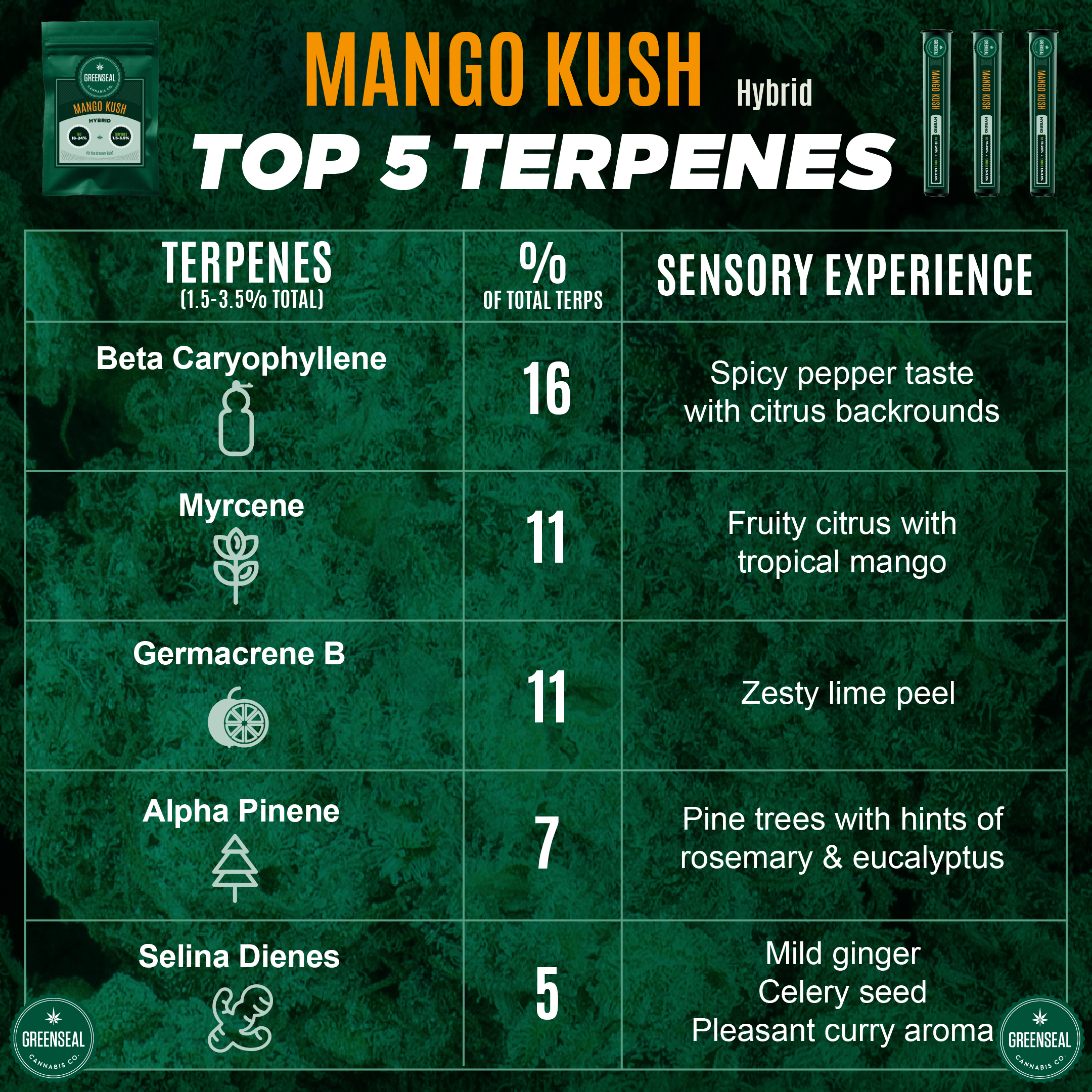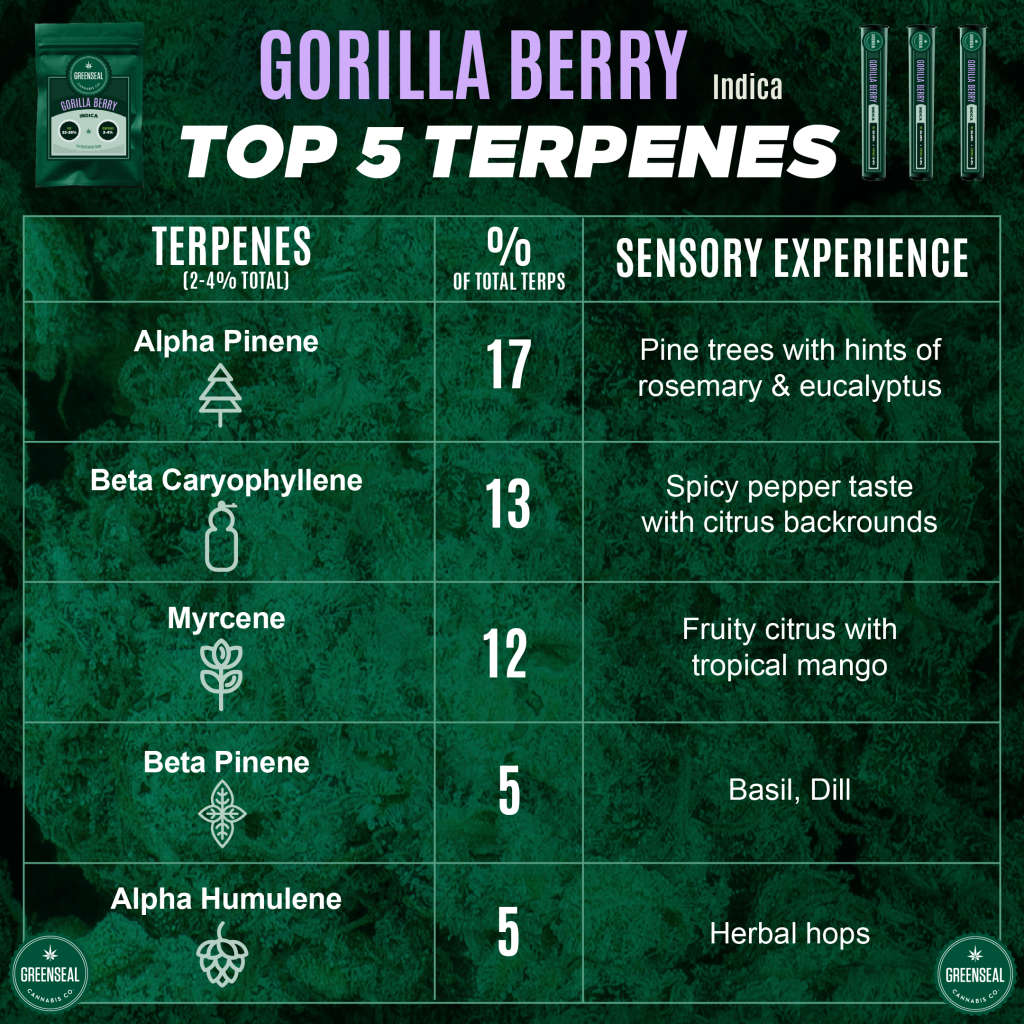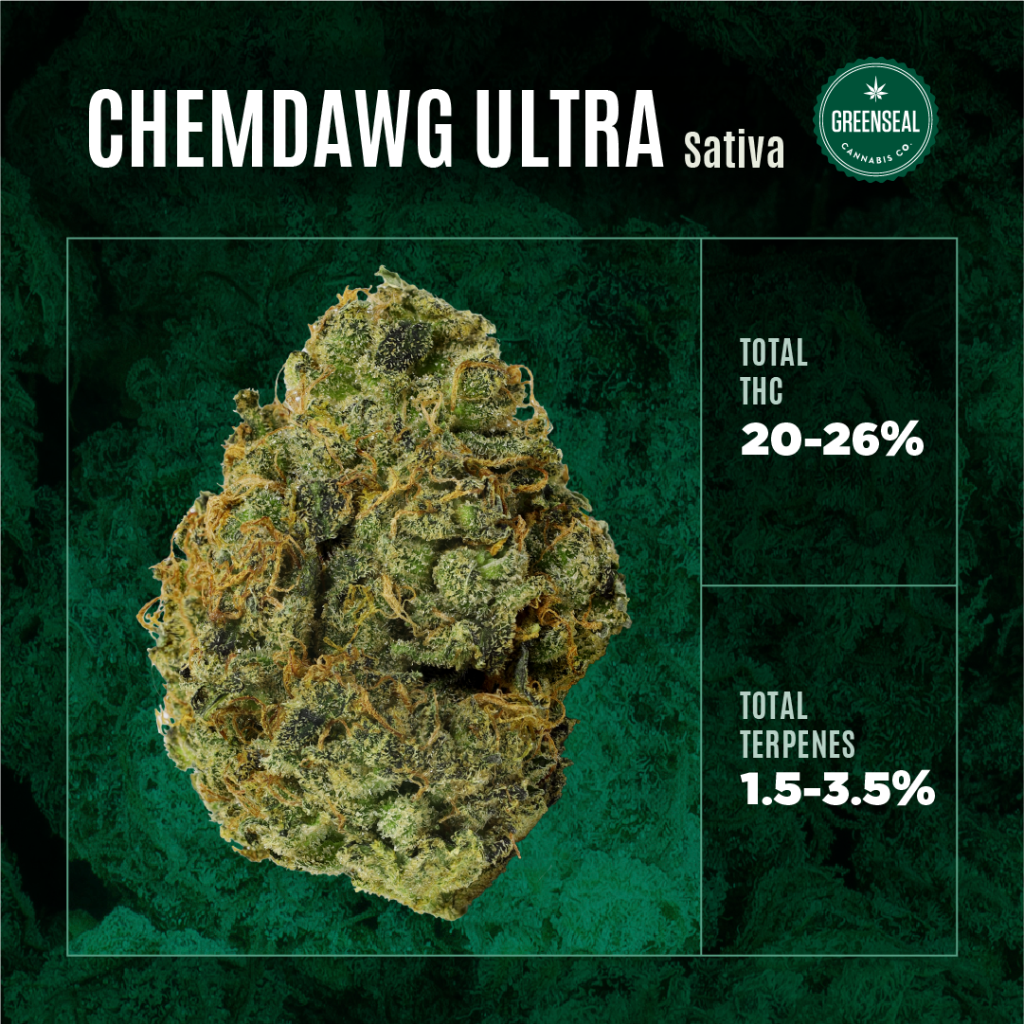All About Terpenes
February 25, 2022
Getting to know the aromatic molecules behind cannabis’ different tastes and smells
For many Canadian cannabis consumers, the dawn of the regulated industry marked the start of a brand-new learning curve.
By the time legalization rolled around most of us were well-versed in different strain names.
Many could ID a cultivar’s lineage along the two main branches of the cannabis family tree: indicas originally came from mountainous regions in Asia, sativas from tropical areas, with countless hybrids comingling them.
The two main cannabinoids sought after by consumers – THC and CBD – were already household names, and people immediately began to associate cannabis quality with the THC potency percentage listed on a flower product.
Then something interesting happened.
Through a combination of research, lab testing, and education, many started to become aware of a new yardstick for understanding and evaluating the quality and character of different cannabis cultivars: Terpenes.
According to the Ontario Cannabis Store, “Terpenes are the fragrant oils found in many types of plants and produce a unique taste and smell.”
To most people (even non-consumers), the strong aroma produced by the cannabis flower is one of its most trademark characteristics.
Terpenes are found in various quantities and combinations among all varieties of fruits, veggies, trees, flowers, herbs, and plants.
Many of those same oily, organic, aromatic compounds also occur among different cannabis cultivars.
Like fine wine aficionados, some cannabis connoisseurs prefer flower with specific scent and flavour profiles.
Thanks to their unique terpene expressions, some cannabis cultivars are experienced as “spicy,” others as “citrusy,” and some dank strains taste and smell downright “woodsy”.
In addition to imparting aroma and flavour, there are emerging theories suggesting different terpenes contribute to, or enhance, different effects of cannabis.
For those embarking on their first journey into the world of cannabis terpenes, the best place to start is with the 411 on the four most common “terps”.
Although GreenSeal’s lab tests detect over 150 different terpenes in our samples, these four are the most prevalent throughout all kinds of cannabis.
Myrcene: Musky & Hoppy
Even if you’ve never heard of myrcene, it’s highly likely your nose and taste buds have encountered it.
Its distinct scent has been described as “musky,” “earthy,” and reminiscent of “ripe fruit”.
In addition to being the single most common terpene found across all types of cannabis, myrcene is also present in hops, mango, thyme, and lemongrass.
If you enjoy eating a soft, ripe mango, or quaffing IPA craft beers that are “hoppy,” you’re likely a fan of myrcene.


As its name suggests, GreenSeal’s Mango Kush is an example of a cannabis strain that’s chock-full of myrcene.
Pinene: Herbal & Leafy
As its name too suggests, pinene is… well… decidedly piney in its smell and taste.
Alpha-pinene (its dominant form) is responsible for the fresh, green, sharp smell conifer/evergreen/fir trees (spruce, pines, etc.) produce in their needles.
Beta-pinene (its alternate chemical incarnation) is the terpene that produces the pleasant herbal flavours in dill, rosemary, basil and parsley.
Pinene was a super popular cannabis terp back in the ‘90s/2000s when famously piney strains like Northern Lights and Jack Herer were all the rage.
At 2-4% overall terpenes, GreenSeal’s flagship indica Gorilla Berry is as rich in flavour and aroma as it is in THC.


As you can see, alpha- and beta-pinene account for nearly a quarter of its aromatic properties.
The sharp and herbal pinene notes mingle with the other fruity and spicy terpenes to create an overall sensory experience reminiscent of a freshly baked blueberry pie.
Caryophyllene: Spicy
Caryophyllene (or more specifically for cannabis, beta-caryophyllene) imparts a savoury aroma and flavour described as peppery, woody, and spicy.
It’s found in some of the most pungent and aromatic spices in the world, including cloves and black pepper.


B-caryophyllene is the third most abundant terp in GreenSeal’s Chemdawg Ultra sativa (accounting for 7% of the total detected terpenes).
Clearly, we are big fans of cultivars featuring this spicy terpene, which figures even more prominently in Gorilla Berry (13%) and Mango Kush (16%).
Limonene: Tangy & Citrusy
Limonene is another easy terpene to remember since its name derives from the unmistakably tangy, sour, citrusy scent and flavour it imparts to lemons and limes.
In addition to citrus fruits, limonene is also the terpene responsible for the powerful aroma and pucker-up sour taste of juniper berries.
In cannabis, limonene is recognized for its ability to naturally repel and ward off insects and pests during cultivation.
GreenSeal’s new Nursery recently zeroed-in on an exceptional sativa phenotype featuring a blast of limonene that’s been accurately described as a “citrus terp bomb.”
Stay tuned for the upcoming announcements on when and where it’s about to drop!
Your journey into the flavourful world of cannabis terpenes has only just begun!
Now that you’re familiar with the top four terpenes commonly found in cannabis, you can start distinguishing between the different tastes and smells you experience when you open a fresh jar of herb.
But be warned: with over 150 different terpenes found across the cannabis spectrum, you’ve started down a long rabbit hole of myriad tastes and flavours to become familiar with.
You’ll eventually be able to recognize the woody, earthy smells of Humulene; the sweet, herbal taste of Ocimene; and the smokiness of Terpinolene.
Do you have a favourite terpene?
Let us know in the comments below!
